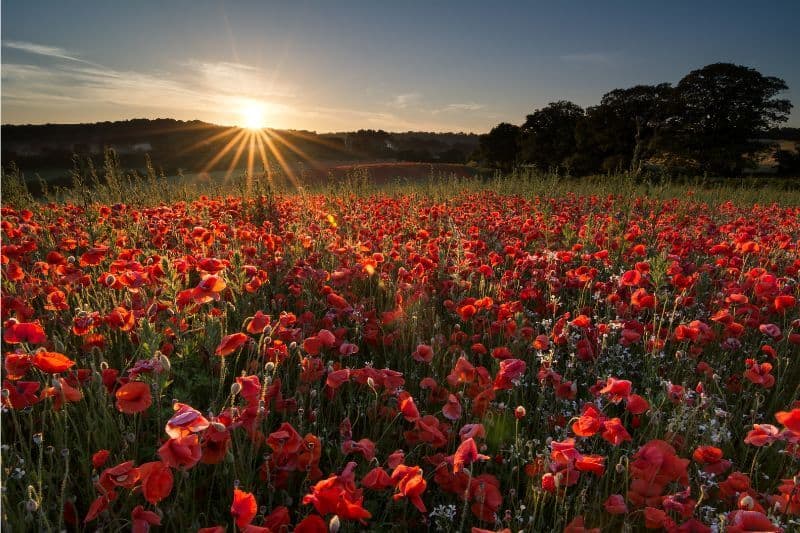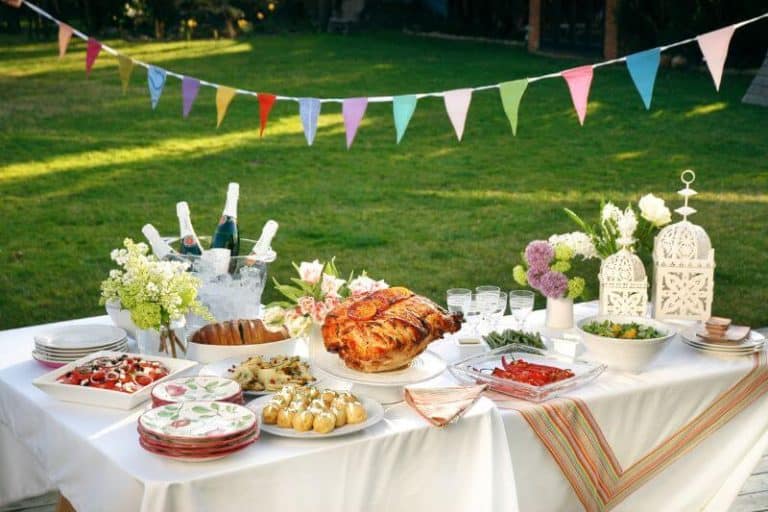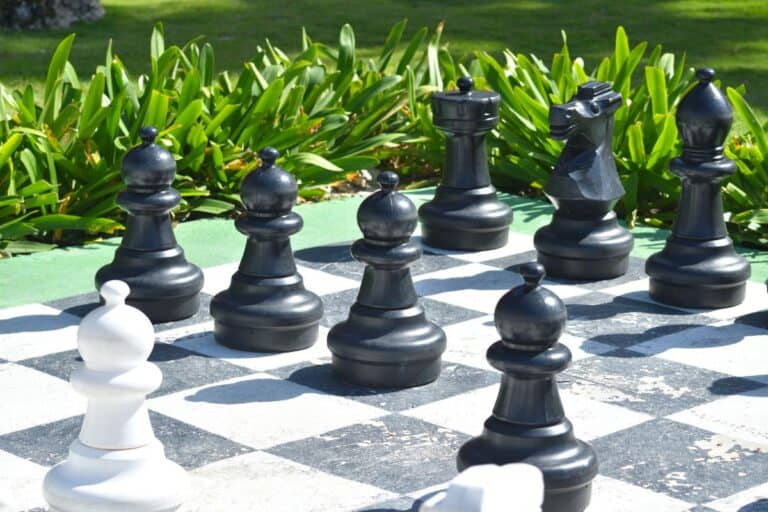Top Summer Solstice Celebrations Around The World
Find inspiration for your own Summer Solstice party or activities with these Summer Solstice celebrations around the world!

Table of Contents
Summer Solstice: A Brief Overview
The summer solstice occurs when the North Pole is angled more toward the sun than on any other day. As a result, it’s the longest day of the year, with the most sunlight, usually falling on or around June 20th in the Northern Hemisphere.
This event marks the start of summer and has been celebrated by various cultures throughout history with different festivities and rituals.
As you probably know, Earth’s axis is tilted which causes the change of seasons. The summer solstice, also known as the first day of summer or midsummer, is the time when the Earth’s tilt towards the sun is at its maximum.
The Northern Hemisphere witnesses its longest day and shortest night, while the Southern Hemisphere experiences the opposite.
There are many summer solstice traditions from around the world, including those in the UK, Ireland, and Scandinavia. These celebrations often have their roots in pagan or Druid practices, marking the importance of the sun and the beginning of the warm season.
Some famous events take place in locations like Stonehenge in Wiltshire, England.
As you explore the different ways people celebrate the summer solstice, remember that the specific date may vary depending on the calendar and geographical region.
While June 20th is the most common date, the solstice might also fall on the 21st or 22nd in some years.
The summer solstice is an ideal time to celebrate the return of warmth and sunlight and to appreciate the Earth’s natural wonders.
Stonehenge and the Summer Solstice Mystery
Druids, Pagans, and Ancient Rituals

Imagine yourself standing amidst the massive, iconic stone circle of Stonehenge, located in Wiltshire, England, as the sun begins to rise on the Summer Solstice. As the soft glow of the sun touches the ancient stones, you feel the powerful energy surrounding this mystical site.
During the Summer Solstice, which occurs around June 21 each year, you would witness the sun’s rays shining directly into the heart of Stonehenge, as it rises behind the Heel Stone, located in the northeast part of the horizon.
This awe-inspiring spectacle has been celebrated for thousands of years by Druids, Pagans, and Earth worshippers alike.
As you explore the area, you’ll learn about the ancient rituals that took place here. Druids, revered as spiritual leaders in Celtic society, were known to gather at Stonehenge to mark the Summer Solstice and worship the life-giving power of the sun. Their beliefs, rooted in mysticism and the forces of nature, are shared by contemporary Pagans who still gather at the site to revel in the energy of the longest day of the year.
Notable Summer Solstice features at Stonehenge:
- Heel Stone alignment with the sunrise
- Presence of Druids and Pagans during the celebration
- Ancient rituals linked to earth worship and mysticism
While mystery still shrouds the original purpose of Stonehenge, what is unquestionable is the excitement you’ll feel during your visit. Connecting with the history and spirituality of the site, you will gain a sense of appreciation for the enduring significance of the rituals and celebrations that have taken place here for millennia.
So, if you find yourself in England around the Summer Solstice, make sure to include Stonehenge in your plans – it will be a once-in-a-lifetime experience.
Top Summer Solstice Celebrations Around the World
United Kingdom
In the United Kingdom, one of the most famous summer solstice events takes place at Stonehenge. Thousands of people, including druids and pagans, gather at this ancient site to witness the sunrise aligned with the stones.
You can join in on the celebration as the sun rises and enjoy the unique atmosphere.
Stockholm, Sweden
In Stockholm, Sweden’s capital, the summer solstice is known as “Midsommar.” During this time, you can take part in traditional activities such as decorating houses with flowers, eating pickled herring, and dancing around the maypole.
The city’s Skansen open-air museum organizes various events showcasing Swedish folk music, dancing, and more.
Reykjavik, Iceland

Reykjavik, Iceland, welcomes the summer solstice with its Secret Solstice Midnight Sun Music Festival. The festival takes advantage of the continuous sunlight during this time of year. You can attend numerous concerts and performances that last throughout the night and well into the early hours of the morning.
Fairbanks, Alaska
Fairbanks, Alaska, often referred to as the Golden Heart City celebrates the summer solstice by organizing various activities, such as the Midnight Sun Run.
Participants enjoy running through the bright Alaskan night while experiencing the vibrant energy of the city during this unique event.
Ottawa, Ontario
In Ottawa, Ontario, the Summer Solstice Indigenous Festival takes place to celebrate First Nations cultures and heritage.
The gatherings consist of traditional earth worship practices, drumming, dancing, and food, offering you a chance to learn about and appreciate the rich traditions of the Algonquin people.
Tyrol, Austria

In picturesque Tyrol, Austria, you can be a part of centuries-old customs by attending the annual Heart of Jesus procession.
Villagers adorned in local costumes participate in a procession accompanied by traditional music and close the night with a bonfire, providing you with an unforgettable cultural experience.
St. Petersburg, Russia
St. Petersburg, Russia, is famous for its “White Nights” during the summer solstice. The sky remains bright until early morning, creating a magical atmosphere for numerous festivals and cultural events.
Attend ballets, opera performances, and concerts, and be a part of this enchanting time in one of Russia’s most beautiful cities.
Longyearbyen, Norway
Lastly, in Longyearbyen, Norway, the midsummer festivities are marked by enormous barrel bonfires. You can participate in this age-old tradition by gathering around the fire with locals and visitors alike, celebrating the extra hours of sunlight in the northernmost inhabited town in the world.
Traditional Summer Solstice Activities and Symbols
Midsummer and Maypoles

During the summer solstice, you can celebrate Midsummer by enjoying traditional customs like the maypole. The maypole often involves people dancing around a tall wooden pole decorated with flowers and ribbons.
This custom is popular in many parts of Europe, particularly in Eastern Europe and Sweden. In Stockholm, Sweden, for example, locals adorn the maypole with birch leaves and fresh flowers, celebrating the day with music and dance.
Fire, Fertility, and Flowers
Fire has a significant role in summer solstice celebrations. Bonfires are often lit as part of the festivities, symbolizing the sun and its life-giving energy.
In some places, people may even jump over the flames for good luck and fertility. The fire represents the yang energy, which can balance out the yin energy during this time of year.
Fertility is another common theme associated with the summer solstice. Many customs and rituals seek to promote fertility and abundance during this time.
For example, in some traditions, virgins and unmarried girls would perform rituals to attract their future husbands, often using flowers as symbols of love and fertility.
Flowers play a significant role in summer solstice celebrations, not just as symbols of fertility but also as offerings to the sun and in the form of wreaths and garlands. In Reykjavik, Iceland, for example, people gather flowers and create beautiful garlands to wear during the festivities.
As you partake in these summer solstice celebrations, it’s important to remember that while some customs have roots in paganism or ancient traditions, they’ve also been adapted and incorporated into various cultures and religions, including Christianity.
Enjoy these festivities with an open mind, a sense of community, and an appreciation for the diverse ways people around the world embrace and celebrate the longest day of the year.
A Look at Summer Solstice in Different Cultures
Summer solstice celebrations vary between regions and cultures across the globe. Here, we’ll explore some of the most interesting traditions from Chinese, Finnish, Ancient Greek, and Mayan observances.
Chinese Culture
In China, the summer solstice marks the beginning of the Duanwu Festival, also known as the Dragon Boat Festival. This celebration commemorates the life of poet and statesman Qu Yuan, who drowned in the Miluo River.
Highlights of the event include dragon boat races, feasting on Zongzi (sticky rice dumplings), and various cultural performances. Families also spend time together, honoring their ancestors and dressing in traditional attire.
Finnish Tradition
For Finland’s Juhannus celebration, locals take advantage of long days and bright nights by organizing bonfires, parties, and concerts. A critical aspect of this tradition is the visit to the sauna, which serves not only as a leisure activity but also as an ancient cleansing ritual.
Saunas are usually adorned with birch branches, and locals enjoy taking dips in lakes after spending time in the sauna. The festivities continue with traditional dance, music, and food to mark this vibrant occasion.
Ancient Greek Observances
In ancient Greece, the summer solstice was a momentous event intertwined with mythology and folklore. The Greeks honored the god Kronos with feasts, games, and processions.
Additionally, some observers claim that the Great Sphinx of Giza in Egypt aligned with the summer solstice, serving as a symbol of the connection between Greece and Egypt during the Hellenistic period.
Calendars from that era also reflected the significance of the solstice in Greek culture.
Mayan Observances
The ancient Maya in present-day Guatemala held special ceremonies in areas like Tikal, Quiriguá, and Uaxactun during the summer solstice. They constructed temples and other structures to align with the solstice and equinox, demonstrating their advanced knowledge of astronomy.
In Tikal, for example, Temple IV perfectly aligned with the sunrise of the summer solstice. Today, local communities continue to participate in rituals and traditions to honor their ancestors and maintain this cultural connection.
So, as you can see, summer solstice celebrations present a diverse and fascinating tapestry of cultural customs, continuing to bring communities together around the world.
The Winter Solstice: A Contrast
While you might be familiar with summer solstice celebrations, it’s important to understand the winter solstice as well, which serves as a contrast to the more sun-soaked festivities.
The winter solstice occurs when the North Pole is tilted farthest away from the sun, resulting in the shortest day and longest night of the year.
In many cultures, this event holds significant meaning and is often marked by various traditions and rituals aimed at embracing the darkness and welcoming the return of longer days.
As a way of acknowledging the importance of balance and the cycle of nature, you can explore how different societies commemorate the winter solstice. In ancient Rome, for instance, the festival of Saturnalia was held to honor their god of agriculture, Saturn. This event saw the city coming together in feasts and gift-giving, outside the usual social norms.
Another notable winter solstice celebration takes place in Iran, where the festival of Yalda is observed. People come together with family and friends, staying awake through the longest night of the year to read poetry, share stories, and eat special foods. The notion of spending time together and sharing warmth during the cold darkness plays a central role in this tradition.
These are just a few examples of how you can contrast your discoveries about summer solstice traditions with their winter counterparts.
While summer solstice events are often centered around the appreciation of sunlight and warmth, winter solstice celebrations embrace the darkness and cold, reminding us of the need for balance and harmony in our lives and the world at large.






